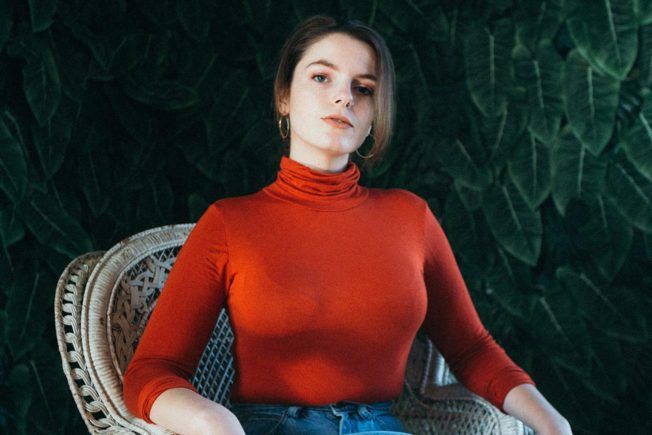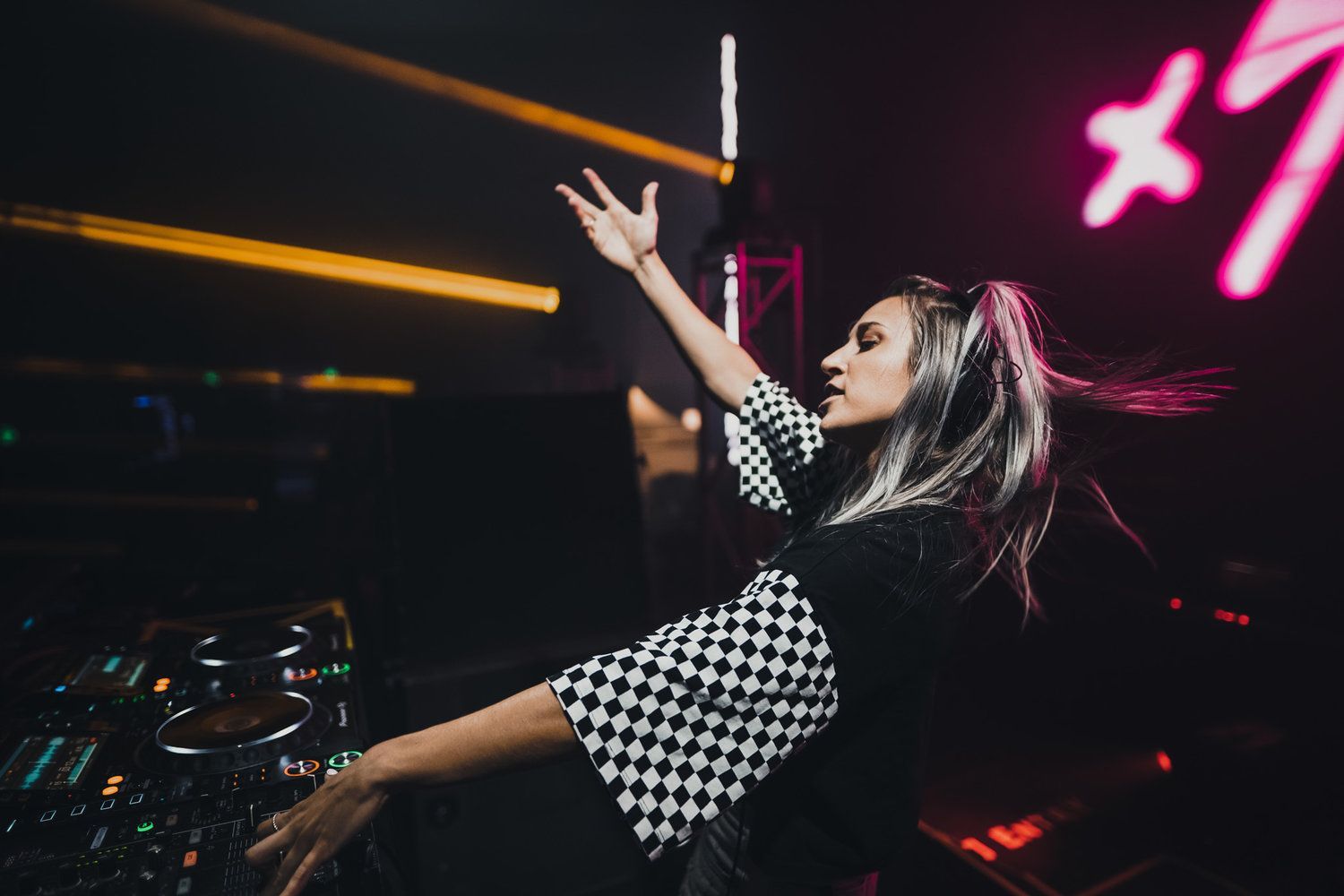This student spotlight introduces you to Makayla Meador, aka Dear Evergreen. She is a rising ICON graduate lighting up the LA music scene with her exquisite vocals and productions.

Introducing Dear Evergreen
Makayla Meador, aka Dear Evergreen, moved from Eugene, Oregon to learn music production at ICON Collective ‘s LA campus. Since graduating from ICON, Makayla has been pursuing her music career in the LA scene playing live shows, releasing music, and teaching her own student’s music production.
Makayla has played alongside notable acts such as Dillon Francis, Cashmere Cat, Ekali, and Jai Wolf. Her music has also garnered massive support, reaching nearly 1 million Spotify streams.
Her vocal-driven indie pop tracks draw inspirations from Norah Jones, Amelia Meath, and Ingrid Michaelson. And Makayla’s exuberant productions perfectly meld her signature genre-bending sound design with catchy pop riffs and vocals. Listen to “Restart,” the first single from her upcoming Superbloom EP set to drop February 4th, 2020.
This rising star has also found success in offering weekly acapellas, MIDI files, vocal samples, music stems, and other production tools on Patreon. She even provides Ableton Live production lessons to inspire fellow producers/musicians to create more.
Dear Evergreen Interview
We spoke to Dear Evergreen about her new release, experiences teaching students music production, and how she discovered her voice. She also shares her experiences moving to LA and what the LA music scene was like outside of ICON.
Since leaving ICON, you have taken on your own students. How would you describe your teaching style? What philosophies and knowledge to do you impart to your students outside of music?
My center focus on teaching is to make sure I’m adding value to what my students are passionate about learning. I like to get to the core of why they’re in music and how to realize their goals. I’m very goal-oriented, so that’s the first exercise I’ll have them do. For example, I’ll ask them to send me their goals and have them get specific. Then from there, I use that as a base for what we work on during the lessons.
Outside of that, I like to talk about how they need to put in the work. For example, the effort and the time. The more you visualize where you want to be, the more likely you will wind up there. I also try to be as supportive as possible.
You’re teaching style is based on discovering individual goals. Have you ever helped someone realize they don’t want to make music?
I feel like I’m in the process of that right now with someone. Not necessarily someone who doesn’t want to make music because she loves music, but rather direction-wise. She’s young, and right now, we’re starting to work on music production. But I constantly remind her that if this isn’t where your heart is truly calling, it’s ok to explore something else. I’ll support you regardless.
Has learning music production at ICON in the traditional way helped you be a better teacher?
Yes absolutely. I feel like I spent a lot of time observing my instructors as much as taking in the information. Seeing what worked and what didn’t helped me tremendously.
You graduated from ICON last year and have returned to work at the school. What was it about ICON that made you want to come back and continue contributing?
First off, I love this environment! I’m passionate and driven and think it’s inspiring energy to be around. I even love expanding into a new campus. Also, I love it when something is in my mind, and then I bring it to fruition. So, learning I would get to be a part of that journey was a big selling point for me. Realizing this will turn into something big, and I get to be a part of that.
I also met so many incredibly supportive and genuine individuals here. Moreover, I made strong friendships with talented people. I think relationships are not only what we desire as humans, but what we need as artists. That’s at the core of how opportunities come about – having strong connections. For example, if my friends do something super cool, I’ll be stoked for them because that means my community is leveling up.
Not being from LA, I’m curious what your experience was like in the LA music scene outside of ICON?
I feel like while in the program, I was intensely focused. But when I left, my world opened up because I went to more events and talked to more people. I’ve also since made solid friendships outside of ICON that have helped me.
Also, shout out to Instagram. If you see someone that’s doing something cool, you can reach out to them. The worst thing they will say is no. There are so many opportunities on there for connection.
You recently changed your artist name from Evergreen to Dear Evergreen. You’re also releasing your first EP under this name soon and performing with a new live set. How does it feel to kick off this next chapter of your career as an artist? What can you tell us about the Superbloom EP?
It felt good. Now it feels really good. If you asked me that a few months ago, I would’ve said, “This feels wrong. I don’t know if I’ve been doing the right thing.”
I did the DJ/future bass/trap/hip-hop thing for about four years, but I realized I’m not listening to that music anymore. I’m also not going to those shows anymore. Even though it’s all I knew, it doesn’t mean I should stay with it. Our tastes change, and that’s ok. I think we need to learn how to lean into that.
It’s like what I tell my students. If someone tells me, “I don’t know if music is right for me, I want to get into watercolor painting”- I’d tell them to do that. Your life is short and precious. You need to explore. If something is drawing you, there’s a reason. You need to see that through and at least experience it.
After ICON, my artistry changed dramatically because, by the end, I started singing. I’ve sung most of my life but never on my own music. Just a little bit here and there.
Why would you not want to sing on your own music?
I didn’t think my voice fit EDM, but I had two mentors who pushed me to write more and experiment. Now I find it’s the easiest way for me to express myself. Writing and singing.
Then when I left ICON, I realized I was in a different position, and I needed to embrace that fully. Otherwise, I will feel like there’s something I didn’t explore, and it would eat me away. I’m the kind of person where if something isn’t working, I will do something about it. I’ll change it or drop it. Because again, there’s no time to waste. Life is short and precious.
All in all, it feels amazing. It also feels scary, but I’m learning that if something feels scary and uncomfortable, I should probably lean into it and explore it to see what I can learn.
Connect with Dear Evergreen

Turn your passion for music into a Profession: Learn more about our Music School Programs!
MORE ARTICLES FROM THE ICON BLOG

FIND YOUR SOUND, HONE YOUR CRAFT:
Are you ready to turn music into a career? ICON prepares students to become music producers, composers, performers, recording artists, professional DJs, and entrepreneurs in the entertainment industry. Click below to get information about our award-winning programs:

